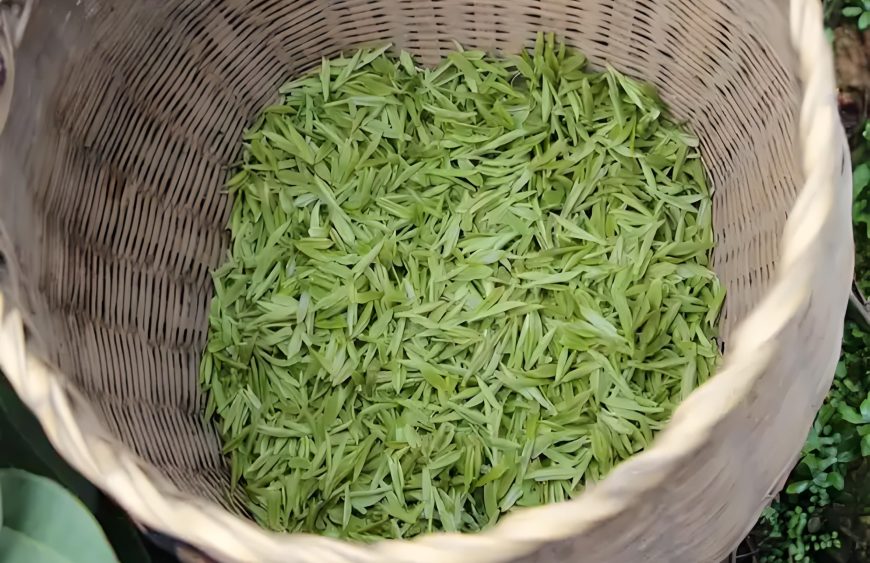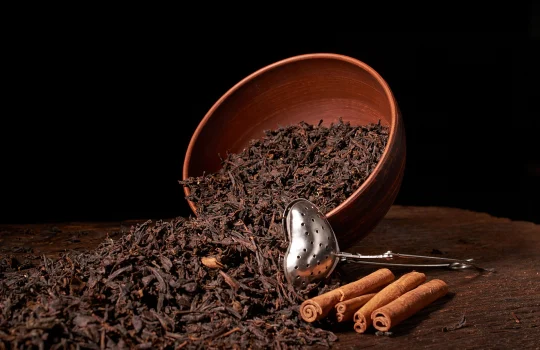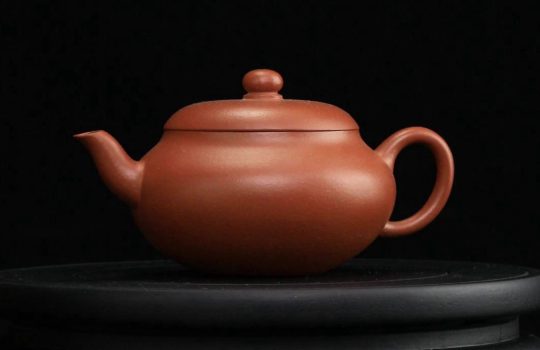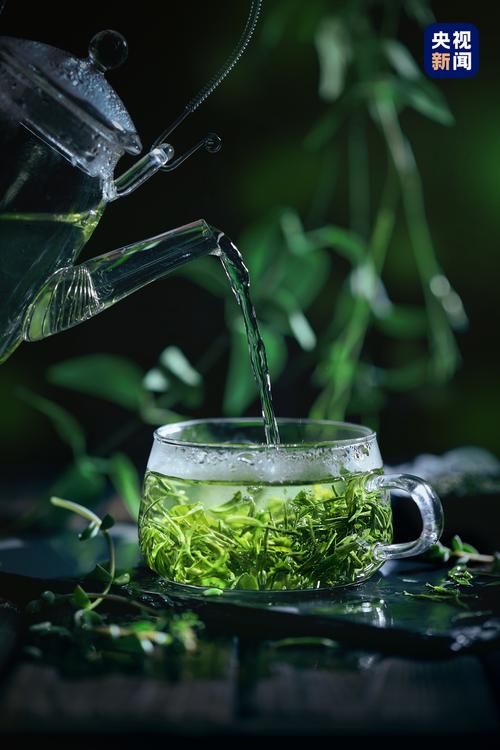Tea Picking
1. Optimal Harvesting Time
(1) Harvesting Season. Tea leaves vary with changes in natural conditions. For example, Taiwan has a spring-like climate year-round,
but the quality of tea leaves differs by season, resulting in varying component compositions. Tea can be harvested 4–5 times annually, including spring tea, summer tea, summer solstice tea, autumn tea, and winter tea. Although five harvests are possible,
the leaves are lush green, tender in texture, and rich in various nutrients, not only making the tea taste fresh and aromatic, but also because the spring temperature is moderate, rainfall is abundant, and the tea plants have rested and rejuvenated during the winter, resulting in plump buds and leaves with a vibrant green colour.
2. Additionally, it has health benefits. In summer, the hot weather causes new tea buds and leaves to grow rapidly, resulting in a relatively lower content of water-soluble substances in the tea broth, particularly amino acids and total nitrogen, which makes the taste and aroma of the tea broth less intense compared to spring tea. In autumn, the climate conditions are intermediate between spring and summer. After growing and being harvested in spring and summer, the new tea buds have relatively fewer nutrients,
As the weather gradually cools, winter tea new buds grow slowly, with accumulated internal substances, resulting in a rich taste and intense aroma. The leaves are of varying sizes, with brittle leaf bases and yellowish hues, and a relatively mild taste and aroma. After autumn tea is harvested, the climate and tea leaves are thus, making the harvesting season for good tea critically important. Tea picking follows the 24 solar terms each year, namely:
Rain Water, Start of Spring, Spring Equinox, Clear and Bright, Grain Rain, Start of Summer, Grain in Ear, Grain in Bud, Summer Solstice, Minor Heat, Major Heat, Start of Autumn, Limit of Heat, Horizontal
White Dew, Autumn Equinox, Cold Dew, Frost’s Descent, Start of Winter, Minor Snow, Major Snow, Winter Solstice, Minor Cold, Major Cold, with each solar term lasting 15 days.
Tree
Spring tea can be further divided into early spring, late spring, before Qingming, after Qingming, before Grain Rain, and after Grain Rain, among others. The tea picked between Qingming and Grain Rain is considered the best. The first summer tea harvest takes place from late May to late June; the second summer tea, commonly known as June White, Summer Solstice Tea, or Second Water Summer Tea, is harvested from early July to mid-August. The first autumn tea harvest takes place from late August to mid-September; the second autumn tea harvest, also known as ‘White Dew Bamboo Shoots,’ is harvested from late September to late October. Winter tea is harvested from late November to early December each year, with tea picked around the start of winter being particularly excellent.
Good tea is generally harvested in the spring and winter seasons, but not all types of tea are best in the spring. For example, oolong tea and black tea are best in the summer, as the high summer temperatures result in higher levels of catechins in the tea leaves, larger tea buds, thicker white downy hairs, and a fragrant aroma.
(2) Harvesting weather. Tea makers often say, ‘The production of good tea requires the perfect combination of heaven, earth, and man.’ Here, ‘heaven, earth, and man’ refer to the weather on the day of tea picking. The weather should be sunny but not too hot, generally not exceeding 25°C. The ideal conditions are sunny skies, cool temperatures, and a gentle breeze.
If the sun is too strong and the temperature too high during picking, the tea leaves may become overripe, resulting in tea with a lack of aroma and cloudy broth. If the harvesting season is marked by continuous rain, it will affect tea quality, as tea buds must be picked once they reach a certain stage of growth; otherwise, they become too mature to produce top-quality tea. Thus, producing good tea is no easy feat—it requires both human effort and favourable weather conditions.
2. Good tea comes from deep in the mountains.
The geographical environment refers to factors such as altitude, soil quality, and location. Sunny slopes are generally considered the best.
The location of the tea garden is also important for producing good tea. Throughout history, China’s tribute teas and famous
tea have been produced at altitudes of 500–1,000 metres. High-quality tea is mostly produced in the mountains. For example, the famous green teas ‘Huangshan Maofeng’ and ‘Lushan Yunwu Tea’ are renowned throughout the country.
So, why is tea produced in the mountains of such high quality? This is because the mountains are layered, with undulating ridges, criss-crossing streams, and dense forests, creating unique ecological conditions. Here, the temperature is moderate and consistent, rainfall is abundant, the soil is deep and fertile, and the valleys are shrouded in mist year-round, with high relative humidity, short sunlight exposure, and abundant diffused light. Tea plants grow year-round in this naturally advantageous environment of shade and high humidity, resulting in tea with a vibrant green colour, robust leaves, visible white downy hairs, and excellent freshness. The tea processed from these leaves often possesses a distinctive aroma that is long-lasting and persistent, with a rich and refreshing taste that withstands multiple infusions.
3. Human Element – The Artistry of Tea Masters
The ‘human element’ refers to the technical skills and spiritual dedication of tea masters. To produce top-quality oolong tea, the process from picking the leaves to completing the tea takes approximately 30 hours, during which tea farmers work tirelessly without rest. However, in addition to physical demands, the technical requirements for tea masters are also extremely high. They must constantly use their sense of smell to control the fermentation process, as this is the only way to produce fragrant, high-quality tea.
The craftsmanship of tea masters encompasses their technical skills, spiritual dedication, and physical endurance. The fragrance of the tea produced depends entirely on the sensitivity of the tea master’s sense of smell and the quality of their spiritual dedication. Typically, the process of producing high-quality tea, from morning picking to the final aroma fixation during kill green, exceeds 16 hours, with virtually no rest breaks. Therefore, the success of the process hinges on the tea master’s technical skill and stamina. The richness of the tea broth also depends on the tea master’s physical strength during the rolling and pressing stages.
In the quiet of the night, it is the moment when every tea master concentrates their efforts to judge the aroma of the tea, control the temperature, and adjust the heat. The tea-making process is lengthy, from picking the leaves to pan-frying, rolling, and preliminary drying, it is alreadyThe next morning at around 3 or 4 o’clock, the tea leaves are wrapped in a cloth and rolled into balls. During this period, there is a 3-hour waiting period for the tea leaves to soften and stabilise. This stage is also the most precious rest time for the tea master in a day. Once the 3 hours have passed, the tea master immediately proceeds to unroll the tea leaves, warm them, and repeatedly roll and knead them to extract the tea juice, shaping the leaves into small, round balls. Only then is the entire tea leaf processing stage complete. By this point, it is already around 3 or 4 o’clock in the afternoon of the following day. Therefore, the production of top-quality tea requires approximately 32 hours for the raw tea processing stage.
After completing the raw tea processing, the tea leaves are left to ferment for several days before undergoing further refinement and flavouring processes such as sorting and roasting, at which point the tea is considered a finished product. Fresh tea leaves have a strong seasonal nature, with only about ten days available for harvesting. If the new buds are missed, they will become old and lose their value for picking. Therefore, tea makers must rush to harvest and process the leaves within the time limit, which is also a significant test of their stamina, physical strength, and endurance.
Aroma and sweetness are crucial factors for high-quality tea. In fact, freshly picked tea leaves from the garden have no aroma or sweetness. The aroma and sweetness of finished tea are produced through chemical changes during the later stages of withering, fermentation, and killing the green. Therefore, careful control is required during this period to ensure the aroma is just right. If the green is killed too early, the tea soup will still have a grassy smell, and if it is killed too late, the aroma will disappear. This process often takes place in the middle of the night, when the human body is naturally tired and sleepy. If the tea master is not in good spirits at this time, they may miss the opportunity to produce high-quality tea, and the tea will lose its aroma, making it unworthy of being called high-quality tea.
Therefore, to produce high-quality tea, the tea master must possess the necessary skills, mental clarity, and physical stamina.




